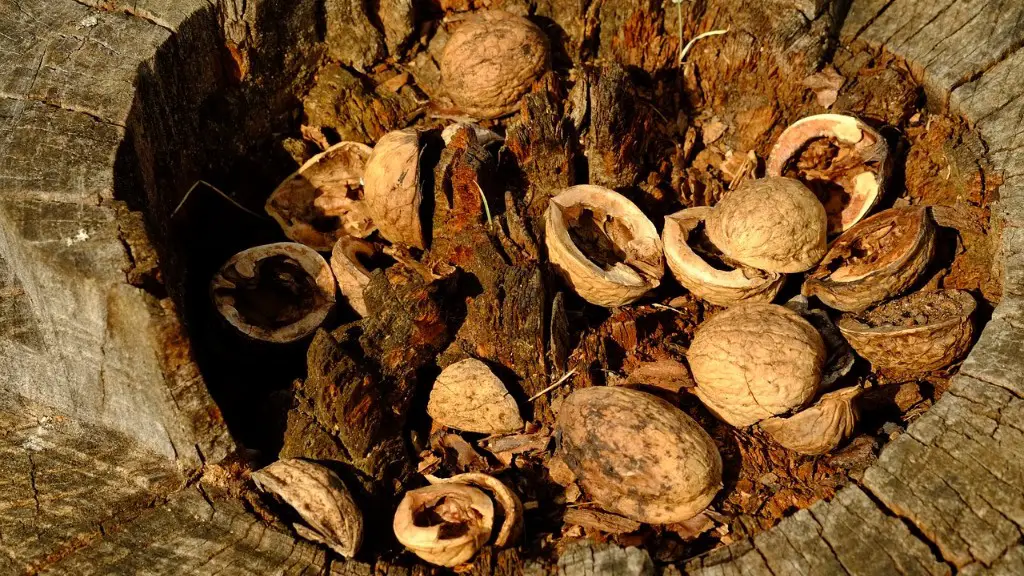Browning leaves on a lemon tree can be a symptom of multiple issues. Generally, it can be caused by a combination of environmental factors, pests, and diseases. The most common issues are dehydration, extreme temperatures, and nutrient imbalance, although there are other reasons why lemon tree leaves may be browning. It is recommended to first identify the cause of the browning before taking any corrective measures.
The first step in diagnosis is to inspect the browning leaves closely. The symptoms of dehydration will appear as a dryness and wither around the edges, while those caused by extreme temperatures will present as bleached and yellow spots. If the decrease in vitality is caused by an imbalance in soil pH or nutrition, brown spots will typically form on the leaves. The presence of pests or diseases can be difficult to detect in the early stages, so careful inspection and confirmation from an expert is recommended.
Once the cause of the brown leaves is identified, the next step is to identify possible solutions. For instance, if the plant is suffering from dehydration, the appropriate technique is to water it more often or use a compost tea with good organic matter. On the other hand, if the root system is not getting enough nutrition, soil-based fertilizers can be added around the base of the lemon tree to ensure optimum nutrition levels. If the browning leaves are due to pests, natural treatments such as neem oil should be enough to ward them off.
In addition to addressing the primary cause of the browning leaves, preventive maintenance is equally important. This requires carefully following the watering and fertilizing schedules of the plant, as well as basic pest and disease control strategies. When fertilizing, it’s important not to overdo it, as too much nitrogen can cause burning of the roots. Additionally, making sure the tree is not exposed to overly hot or cold weather can help protect it from temperature-related issues.
Routine inspection of a lemon tree’s leaves is essential for noticing any signs of stress and taking corrective measures in a timely manner. As the health of the tree is directly affected by the environment it is exposed to, regular maintenance on both the plant and its environment should be carried out to ensure it is receiving the necessary care.
Environmental Factors
There are a number of environmental factors that can contribute to the browning of a lemon tree’s leaves. Most notably, extreme temperatures can cause rapid dehydration, which can lead to the leaves turning brown quickly. Similarly, prolonged exposure to direct sunlight can cause sunburn, causing the leaves to become yellow and brown. Other environments-related factors such as low humidity and strong winds can also cause dehydration and make the tree more prone to disease.
The soil pH can also play a role in the health of the tree. If the soil contains too much alkaline, it can cause the leaves to turn yellow and brown. On the other hand, if the soil contains too much acid, the leaves may become brown and wilted. Adjusting the pH of the soil to the appropriate level can help combat the browning of the leaves.
Finally, irregular or insufficient watering can also lead to a lemon tree’s leaves turning brown; either because of dehydration or because of a nutrient imbalance. Because of this, it’s important to ensure your lemon tree is properly watered and that it is given the right amount of water at the right times.
Pests and Diseases
Pests and disease are another common cause of browning and yellowing of leaves. The most common suspects are aphids, mealybugs, scale insects, and spider mites. These pests tend to suck the nutrients from the tree, which can cause the leaves to yellow, wither, and turn brown. Additionally, pests can create wounds on the leaves of the lemon tree, which can worsen the problem.
Diseases such as citrus canker can also cause damage to the lemon tree’s leaves, leading to browning. Citrus canker is caused by a bacteria and is characterized by cankers appearing on the leaves, which can cause yellow, black, and browning of the leaves. To tackle citrus canker, the infected branches must be removed and burnt, while the remaining tree should be treated with neem oil.
It is also important to note that both pests and diseases can easily spread between lemon trees, so it’s important to identify any instances quickly and take appropriate actions to prevent further damage.
Nutrient Imbalance
In addition to pests and diseases, an imbalance in nutrients may also lead to the browning of a lemon tree’s leaves. An insufficient supply of nitrogen, potassium, and phosphorus can cause the leaves to yellow, wither, and turn brown. On the other hand, an excessive supply of nitrogen can also cause the leaves to discolor, leading to browning.
Additionally, an imbalance of other nutrients such as magnesium and calcium can affect the tree’s health and cause discoloration of the leaves. To combat issues related to nutrient imbalance, it is recommended to use soil-based fertilizers to ensure the proper levels of all essential elements.
Other Causes
There are also other causes which can lead to the browning of a lemon tree’s leaves. Poor drainage, root rot, and root compaction can all cause the leaves to discolor. Additionally, stress caused by pruning, an abrupt transplantation, or an inappropriate environment can also lead to browning.
Overall, it is important to remember that there can be multiple factors that contribute to the browning of a lemon tree’s leaves. It is recommended to identify the cause of the problem before taking any corrective actions. Through proper identification and implementation of corrective strategies, it is possible to revive a lemon tree and keep it healthy and thriving.
Corrective Measures
Once the cause of the browning leaves is identified, corrective measures can be taken to get the tree back to health. If the issue is related to the environment, such as temperature, exposure to direct sunlight, low humidity, or strong wind, it may be necessary to move the tree to a more suitable location.
If the cause is related to pests or diseases, it is important to take appropriate actions to eliminate them. Natural treatments such as neem oil can be effective, while store-bought insecticides or fungicides can also be used in extreme cases. It is also important to note that both pests and diseases can easily spread, in which case preventive measures such as regular inspection and swift elimination of any infestations are key.
If the issue is related to nutrition, soil-based fertilizers containing all the essential elements should be used. It is important not to over fertilize, as too much nitrogen can cause drastic burning on the roots. Experience-based fertilizer formulas can also be used for times when the nutrient needs of the tree cannot be accurately predicted.
Finally, regular maintenance on the tree and its environment is key to ensuring the tree is healthy and thriving. Careful monitoring of the environment and detection of any signs of stress is essential in order to take corrective measures quickly. Additionally, following the nutritional and watering schedules provided by the manufacturer should help ensure the tree is receiving the care it needs.


